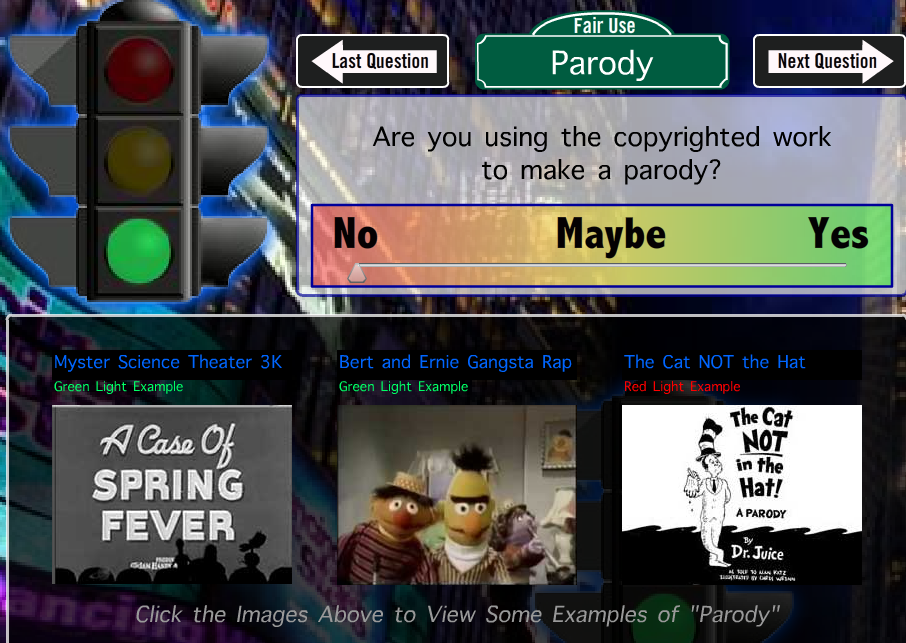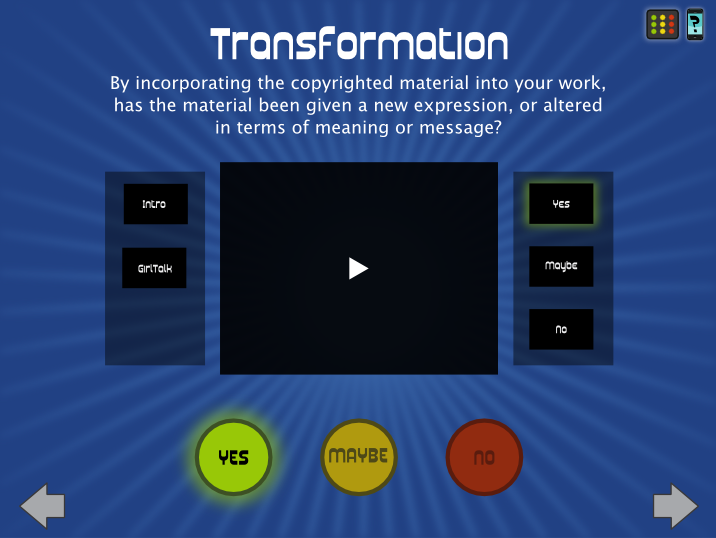Fair Use
Legal Definitions
A. Fair use isâ¦
Fair use is a legal doctrine that permits some uses of copyrighted works without the permission of the copyright owner. These fair uses are considered beneficial to society. Fair use will not permit you to merely copy anotherâs work and profit from it, but when your use contributes to society by continuing the public discourse or creating a new work in the process, fair use may protect you.
While Fair Use outlines the ways in which you may use a copyrighted work without asking for permission, the copyright holder retains exclusive rights to the work. If the copyright holder disagrees with the way you have made use of his/her work, legal action may be taken. Make sure you understand fair use and your institutionâs (or communityâs) best practices regarding fair use before making use of copyrighted materials.
B. A âgrey areaââ¦
Fair use isnât black and white. Most of what you may and may not do under the Fair Use guidelines falls within a âgrey areaâ. Fair Use guidelines deliberately were drawn broadly to allow for flexibility in interpretation. However, as a result, the principles underlying court decisions on fair use remain unsettled.
Click here for a list of recent court decisions on Fair Use.
To date, the Center for Social Media at American University has produced âThe Code of Best Practices in Fair Use" guides for both online video and documentary filmmaking. If your use involves either type of media, you would be well advised to familiarize yourself with the practices suggested. The AUSOC has also published a report entitled The Code of Best Practices in Fair Use for Media Literacy.
C. Evaluating fair useâ¦
The courts must consider four statutory guidelines, codified in 1976, in deciding whether a particular use of copyrighted material qualifies for a Fair Use exception.
"The fair use of a copyrighted work, including such use by reproduction ... or by any other means specified ..., for purposes such as criticism, comment, news reporting, teaching (including multiple copies for classroom use), scholarship, or research, is not an infringement of copyright. In determining whether the use made of a work in any particular case is a fair use the factors to be considered shall include â
1. [T]he purpose and character of the use, including whether such use is of a commercial nature or is for nonprofit educational purposes; 2. [T]he nature of the copyrighted work; 3. [T]he amount and substantiality of the portion used in relation to the copyrighted work as a whole; and 4. [T]he effect of the use upon the potential market for or value of the copyrighted work.â
The fact that a work is unpublished shall not itself bar a finding of fair use if such finding is made upon consideration of all the above factors." 17 U.S.C. §107.
As mentioned previously, the fair use guidelines are very broad. While past court cases illustrate the types of uses judges have considered fair, it can be equally advantageous to look at specific communities of use. Many institutions such as schools and library systems have developed their own internal guidelines governing fair use.
The Test
Fair Use Test w/ Examples Link
Here's an overview of the questions.
- FACTOR 1 Q's:
1. Transformation: By incorporating the copyrighted material into your new work, has the material been given new expression, or altered in terms of meaning? Yes=Green
2. Commercial: Will your work be used for commercial gain or only in a noncommercial context? Commercial=Red; Non-Commercial=Green
3. Parody: Is the copyrighted work being parodied? Yes=Green
4. Critique: Are you commenting or critiquing the copyrighted material? Yes=Green Are you using the copyrighted work as an illustration or example? Yes=Green
- FACTOR 2 Q's:
5. Published: Has the copyrighted material been published already? Yes=Green
6. Factual: Are you using copyrighted material that concerns facts or data, and/or is scholarly in nature? Yes=Green
- FACTOR 3 Q:
7. Amount: Is the amount of the original copyrighted material you are using reasonable? Yes=Green
8. Could you use less and still make the same statement? Yes=Red
- FACTOR 4 Q's:
9. Substitute: Would (potential) buyers/users of the original work consider your work an adequate substitute for the original? (yes=red)
10. Market Injury: Is there an existing or potential market for the original work that could be impacted? (yes=red)
NOTE: All factors exist in a multifactor analysis. Just because one factor weighs against you doesn't necessarily mean you lose the fair use argument.
EXTRA CREDIT: Best Practices: Have you researched and are you familiar with the fair use best practices your media-making community uses? Yes=Yellow
Mixed Media
Fair Use Videos
3:51 Remix Culture from the Center for Social Media. The video shows different clips of pop culture videos and at the end of the piece tells you that all of the clips contained unauthorized use of copyrighted video. It asks, "What's Fair?"
GirlTalk
List of Copyrighted Songs used for Feed The Animals 2008 Album

